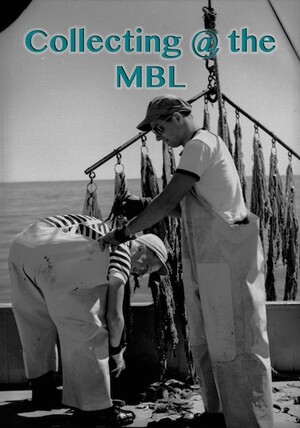A major revolution in collecting at the MBL was the application of scuba diving. Scuba diving allows for more targeted missions than blindly dragging a net, as scuba divers can target very specific environments and retrieve exactly the specimens they are interested in. By the 1950s, scuba trips launched from the collecting vessel the Dolphin were a common way to collect specimens.
From nets, to dredges, to scuba diving, these methods illustrate an important shift that happened during the first 100 years of the MBL. In the beginning, scientists pretty much gathered their own organisms. However, as demand and the number of people at the MBL increased, a staff of collectors became the key ingredient for providing enough specimens for research. Of course, there continued to be a mixture of these methods, and many scientists tried to remain as close to the collecting process as possible. For example, in the 1950s, when the majority of organisms were being collected by collecting teams, students in the courses still arranged field trips to the shore to understand the organism's environment.
- Dolgin, Elie, “The Squid Collector,” http://www.nature.com/news/not-your-average-technician-1.16785
- “John J. Valois, Obituary” http://www.mbl.edu/obituaries/john-j-valois/
- “John Valois, Longtime Specimen Collector and Naturalist, Honored at the Marine Biological Laboratory,” July 12, 2011, http://hermes.mbl.edu/news/press_releases/2011/2011_pr_07_12.html
- The Collecting Net Spring 2006, Vol. 2, No. 1 http://hermes.mbl.edu/publications/collecting_net/2006/06_01net06.html Accessed on July 16, 2015.
- Maienschein, Jane, and Ruth Davis. 100 years exploring life, 1888-1988: the Marine Biological Laboratory at Woods Hole. Jones and Bartlett Publishers, 1989.
- “MBL Moment with Dave Remsen,” MBL Catalyst January 2014, p 12-13. http://www.mbl.edu/wp-content/uploads/2013/07/Catalyst.Winter13-14.web_.pdf Accessed on July 16, 2015.
- Williams, Wendy. Kraken: The Curious, Exciting, and Slightly Disturbing Science of Squid. Abrams, 2011.

